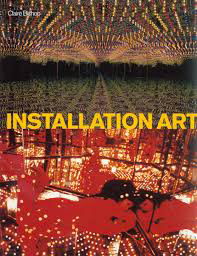Books that Inspire Me
Throughout my final year my reading list expanded greatly. The degree show module coincides with the dissertation. My dissertation and art practice linked together quite easily. Having to write a 7000-word dissertation allowed me to understand the area of art that most intrigues me and the theory contributed to realising my light experimentation's throughout the semesters.
Art and Objecthood and Installation Art, contributed a lot to understanding the presence of my art. Reading Fried's essay taught me about the ongoing debate that occurred throughout the 1960s. Art movement, Minimalism happened during the 1960s causing a multitude of debates regarding the topic of good art. Fried wrote his essay towards the latter of the movement and often compared Minimalism to Abstract Expressionism (the movement that ended in 1959). Both Fried and Clement Greenberg championed Abstract Expressionist art as it represented a true form of itself. This true form was not as evident with Minimalist sculpture, in which Fried converses within his essay. He spoke about the 'anthropomorphic presence' of an artwork and that Minimalist sculpture evoked such presence. Yet, Minimalist artists; such as Donald Judd did not acknowledge this presence.
Another aspect that Fried discussed within his essay relates to the ideology of theatricality within art. He claimed that: ''Art degenerates as it reaches theatre'' (Fried, pp.8) This claim has been ruled out in relation to my installations on an already existing past blog I have written, but to summarise; when in context of theatricality relating to art, degeneration is far from evident. Relating to my art, I am more than confident to accept that not only does my art require presence, it also exuberates a presence.
Installation Art by Claire Bishop contributed to my knowledge in relation to understanding perspective and Merleau-Ponty's influence on art during the 60s. It also added context on the definition of installation art and the varying meanings behind the term.
The Alistair McAlpine book is different from the other two. It is not theory but focuses on the artists and their sculptures. This book was introduced to me very late during my final year and I can only imagine how incredibly helpful it would have been if I were to of discovered it earlier on. The sculptors involved within the book all specialise in large three-dimensional, geometric sculptures that are typically presented as land art. This book reminded me of what started this geometric exploration for this semester. It is very similar in context to the sculptures I saw that were plotted around Cambridge-the scenario that inspired my geometric exploration.


